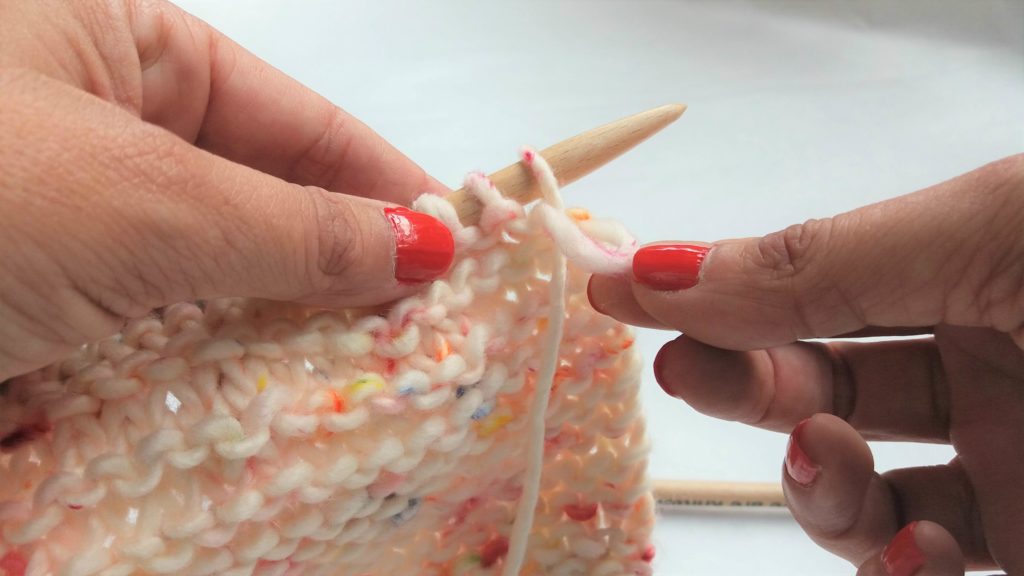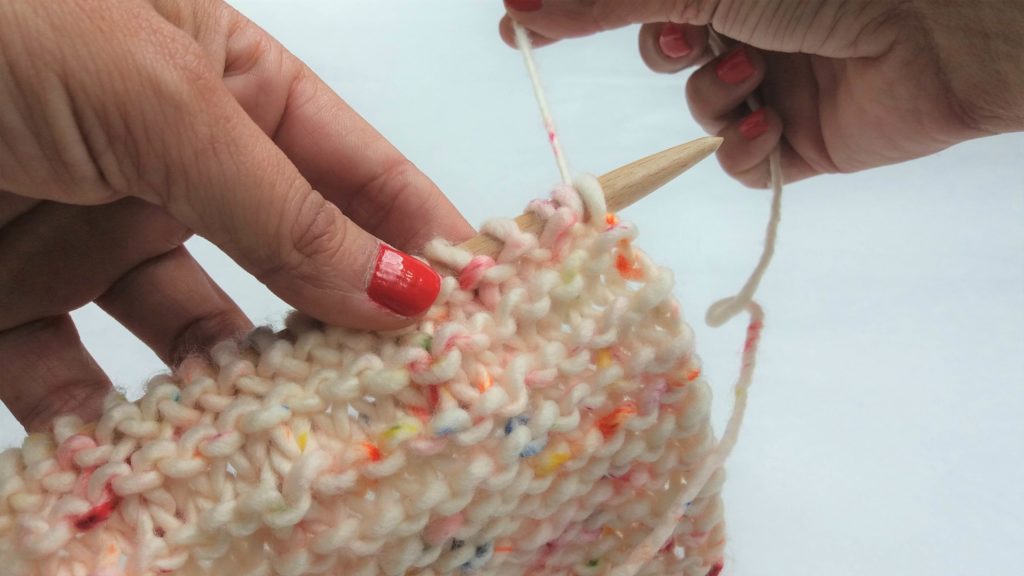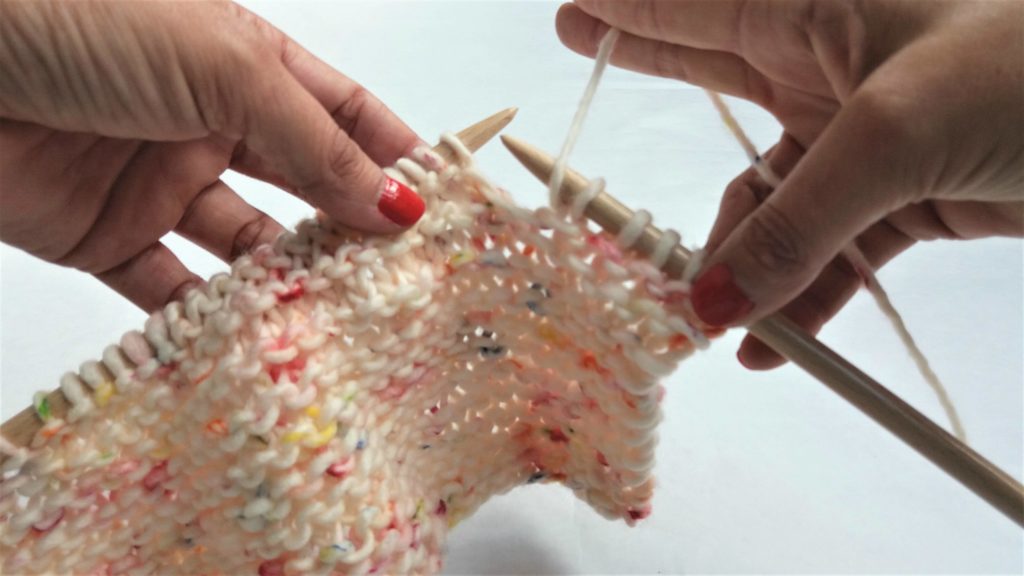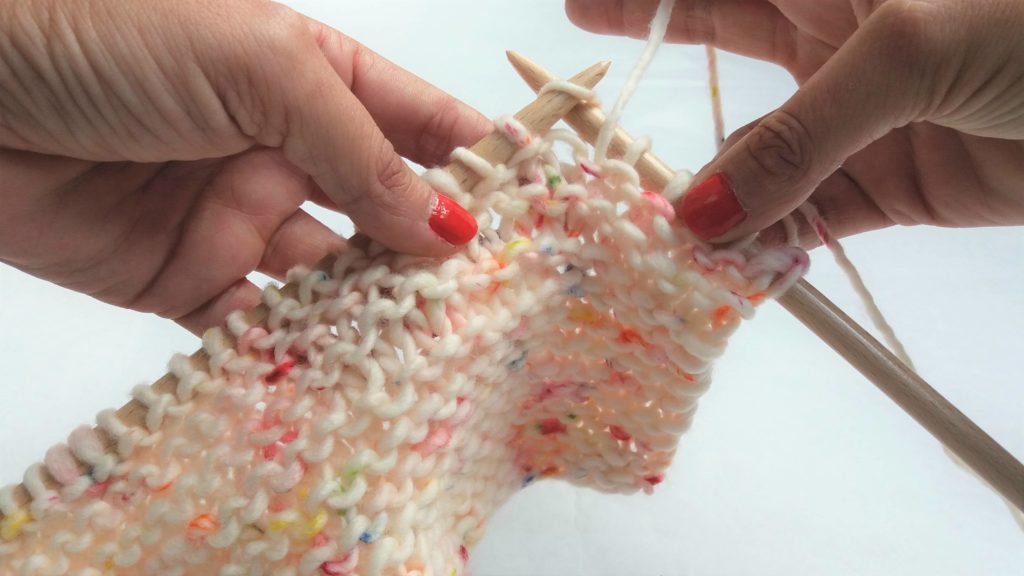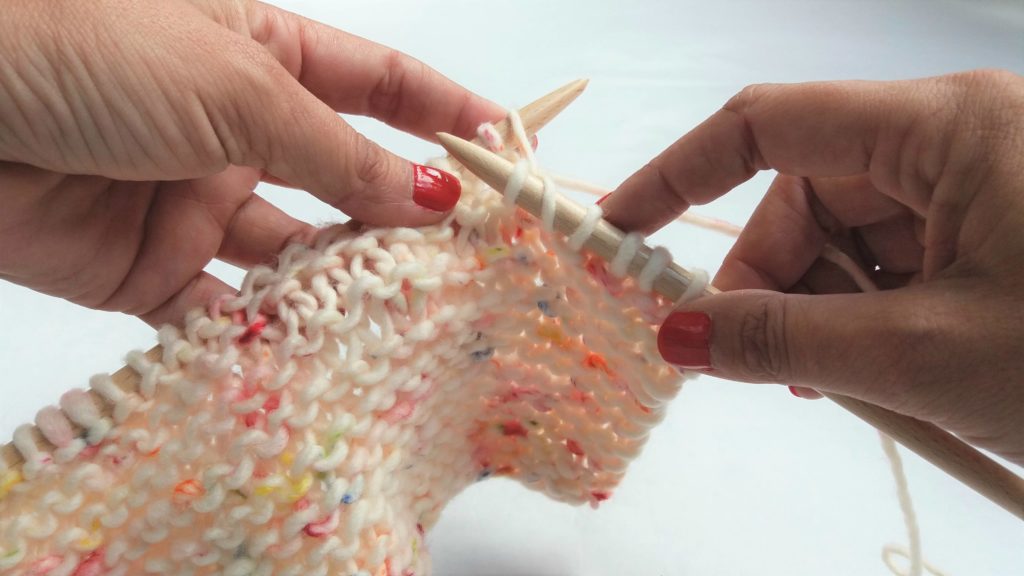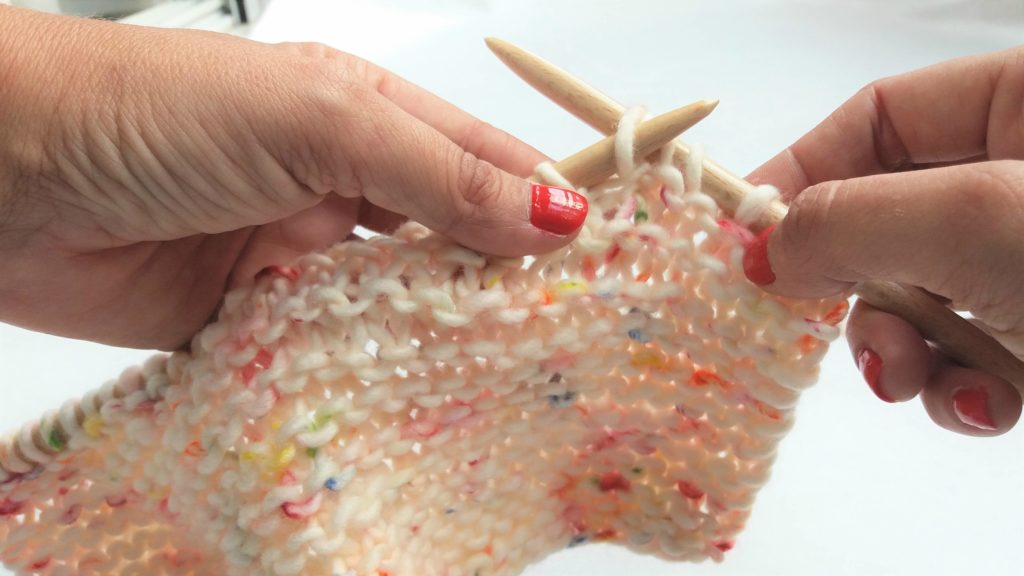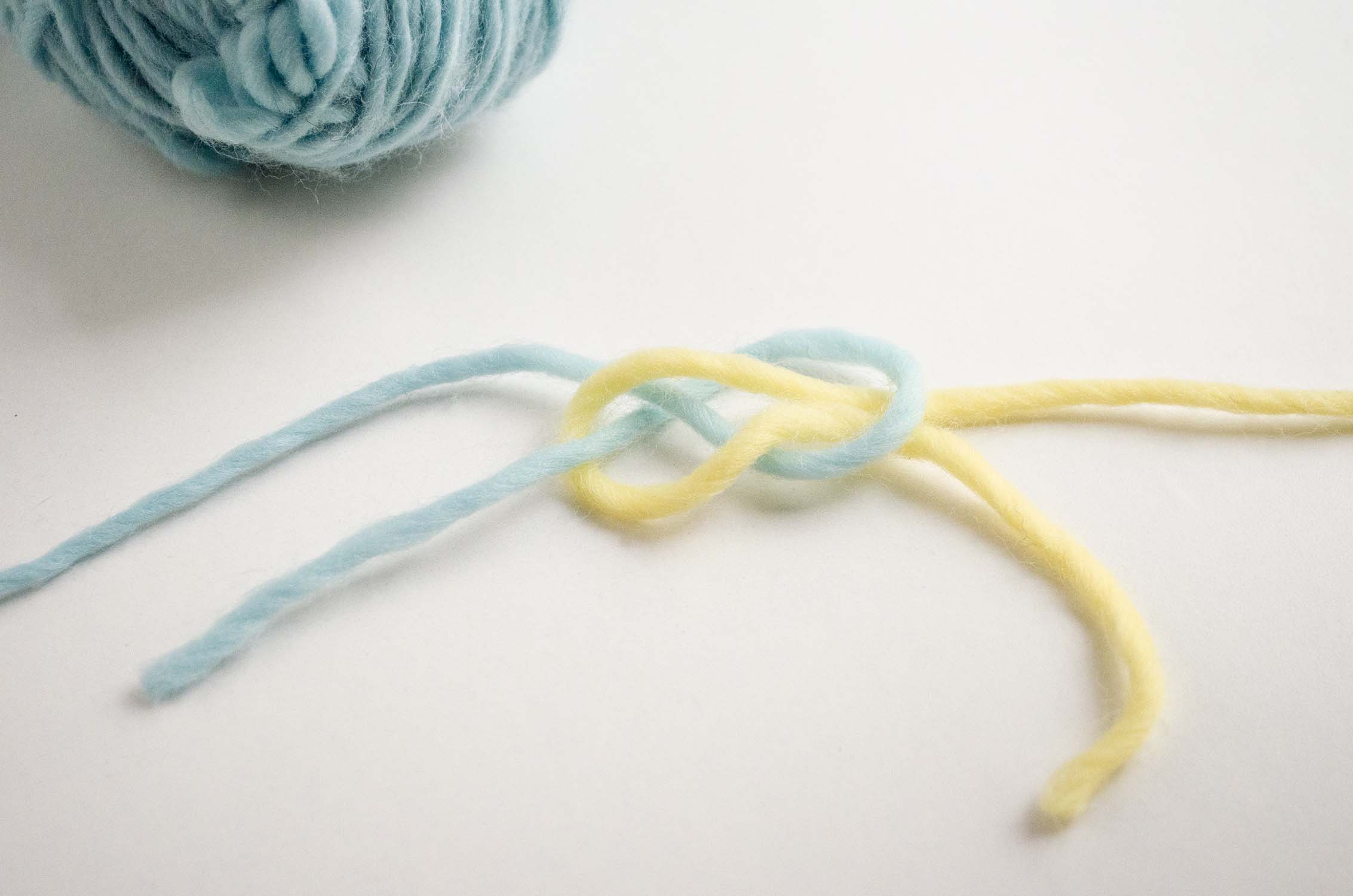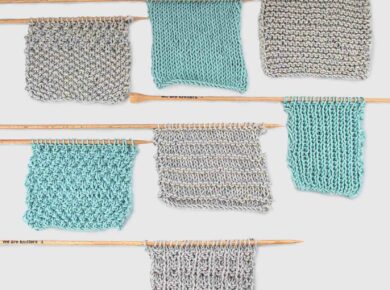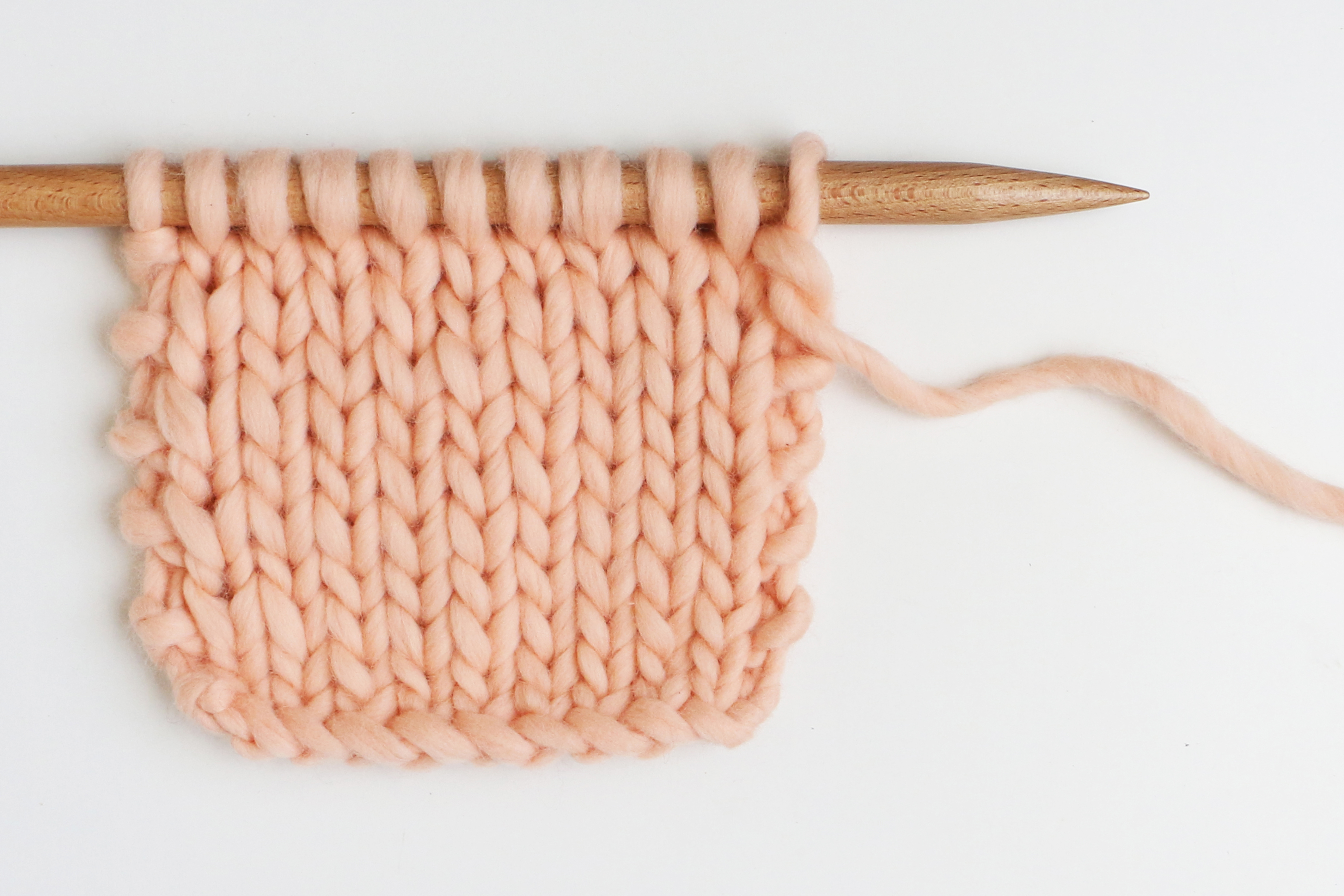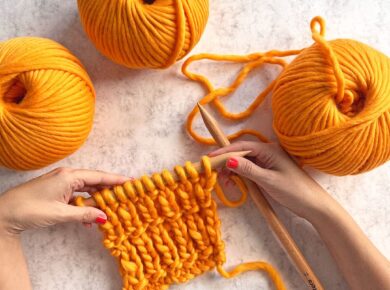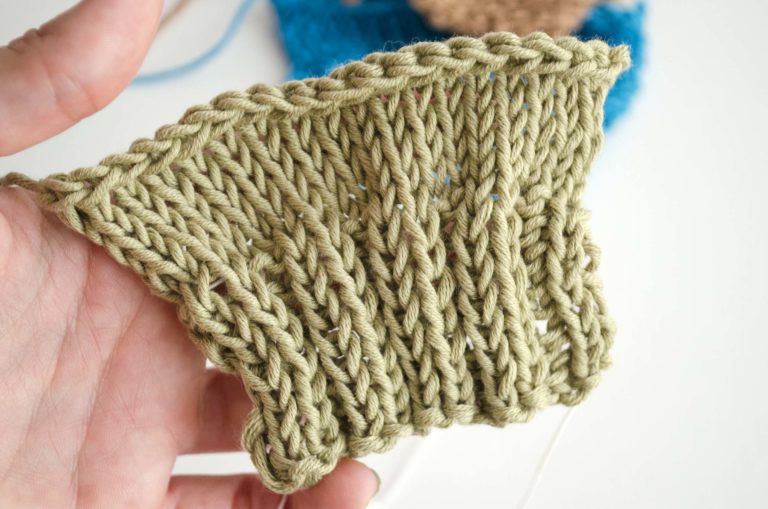WHAT A DRAG!
Something has happened with the project, because now I have one additional stitch! The shape of the project is a little bit weird, it’s not straight! What has happened? Well, sometimes in a hurry, or at the beginning of rows, we mix up the stitches and we work one more, or two, or three… There are three very common ways to mix up stitches and increase without really wanting to do it. It’s alright, now we will explain what may have happened so you avoid it next time.
First way:
Many times the first stitch in the left needle is a bit loose. As much as you pull the strand, there is no way to tighten up this stitch. You might think if you place the strand in the back the stitch is tight, but not really, now you will have two stitches. Keep an eye at the beginning of the row and don’t mix up the stitches. It’s always useful to count them, besides making you relaxed, you will know for sure if you have the amount of stitches corresponding to the project.
Second way:
It may also happen in the middle of the row. If you are knitting the stitch, the strand should always be behind the needle. If by forgetfulness, or if you put down the project for a moment and you place the strand in front of the needle, you will be creating a new stitch. In fact, it’s easy to identify it because you will have a small hole, on the next rows you will have an additional stitch and the project will lose its original shape. Keep in mind always where the strand is, if you knit the stitch it should be on the back and if you purl it, it should always be on the front.
Third way:
And other way to make a mistake, is by working the stitch twice. Yes, it can happen to you. You slip the stitch, but not completely and you pass the strand again and voilà! You have made a new stitch. It will look like a small v and really you are increasing a stitch, so again, you will lose the shape of the project.
Well, we are human and make mistakes! I hope these three tricks are useful to you. Learn how to knit with the different fibers of We Are Knitters. To illustrate this post we have used the Merino Wool sprinkle fiber.
